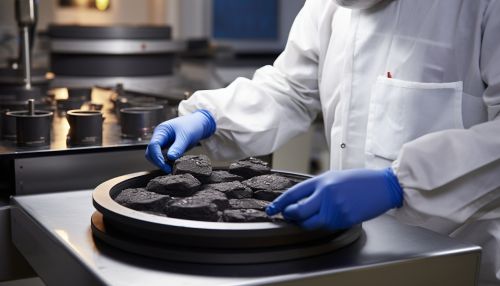Radiocarbon Dating
Introduction
Radiocarbon dating, also known as carbon-14 dating, is a method of determining the age of an object containing organic material by using the properties of the radiocarbon (14C), a radioactive isotope of carbon. The method was developed in the late 1940s by Willard Frank Libby, an American physical chemist and Nobel laureate.


Principles of Radiocarbon Dating
Radiocarbon dating is based on the fact that the interaction of cosmic rays from the sun with nitrogen atoms in the atmosphere produces an unstable isotope of carbon, namely radiocarbon. The 14C isotope decays over time and it is this decay that is measured to obtain the age of the sample.
The amount of 14C in the atmosphere, and thus in plants and animals, has not always been constant. For instance, the concentration of 14C in the atmosphere has varied over time due to factors such as the magnetic field of the earth and solar activity. Therefore, the age of a sample is calculated based on the ratio of 14C to 12C, and the half-life of 14C.
Methodology
The process of radiocarbon dating starts with the extraction of carbon from the sample. The carbon is then purified and converted into a form suitable for counting, either by gas proportional counting, liquid scintillation counting, or accelerator mass spectrometry.
The age of the sample is calculated using the Libby half-life of 14C, which is 5568 years. However, this does not take into account the fact that the concentration of 14C in the atmosphere has varied over time. To account for this, calibration curves have been developed that correlate the radiocarbon age of a sample to its calendar age.
Applications of Radiocarbon Dating
Radiocarbon dating has been used in many fields to learn information about the past conditions of organisms and their environments. The most common applications are in archaeology and geology, but it is also used in other fields such as hydrology, atmospheric science, and oceanography.
In archaeology, radiocarbon dating is used to date artifacts and sites, and to establish chronologies. In geology, it is used to date sediments and sedimentary rocks, and to estimate the ages of fossils.
Limitations and Potential Errors
There are several limitations and potential sources of error in radiocarbon dating. One of the main limitations is that it can only be used to date materials that were once part of a living organism. It cannot be used to date rocks directly.
Another limitation is that the maximum age that can be accurately determined by radiocarbon dating is around 50,000 years. Beyond this age, the amount of 14C in the sample is too low to be measured accurately.
Potential sources of error include contamination of the sample, variation in the 14C/12C ratio in the atmosphere, and errors in the measurement of the amount of 14C in the sample.
Conclusion
Radiocarbon dating is a powerful tool used by scientists in many fields to learn about the past. Despite its limitations and potential sources of error, it has provided valuable information about the history of our planet and the organisms that have lived on it.
